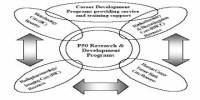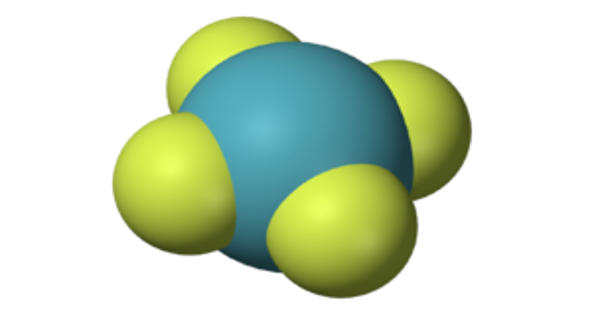Researchers from the Universities of Oxford and Cambridge, working together, have found that the X-ray dosage rates that a material used in solar cells called bismuth oxyiodide (BiOI) can detect are almost 250 times lower than those of the best-performing detectors now in use in industry.
This could increase the safety of medical imaging while also creating new possibilities for non-invasive diagnostics like X-ray video approaches. Their results are reported in the journal Nature Communications.
Bismuth oxyiodide (BiOI) is an inorganic compound composed of the elements bismuth (Bi), oxygen (O), and iodine (I). It is a yellowish solid with a crystalline structure. BiOI is primarily used in various applications, including photovoltaics, photocatalysis, and antimicrobial agents.
“We have developed BiOI single crystals into X-ray detectors that work over 100 times better than the current state-of-the-art for medical imaging,” said Dr. Robert Hoye from the University of Oxford, who led the work. “BiOI is nontoxic, stable in air, and can be grown cost-effectively and at scale. We are very excited by the potential BiOI has to make the next generation of non-invasive diagnostics more accessible, safer, and more effective.”
BiOI is a nontoxic semiconductor that absorbs visible light and is stable in air. Due to these characteristics, there has been an increase in interest in this material over the past ten years for a variety of applications, including energy harvesting to power smart devices, solar cells (which convert sunlight into clean electricity), and photoelectrochemical cells (which convert sunlight into fuels).
BiOI can effectively absorb X-rays since it comprises the two heavy metals bismuth and iodine. However, prior attempts to convert BiOI into X-ray detectors failed due to high energy losses from flaws resulting from the detectors’ fabrication being nanocrystalline.
We have built a microscopic quantum mechanical model of electrons and ions that can fully explain the remarkable optoelectronic properties of BiOI that make it such a good material for X-ray detection. This gives us a roadmap for designing even more materials with similarly advantageous properties.
Dr. Bartomeu Monserrat
The scientists created and patented a process for using a scalable vapor-based approach to generate high-quality single crystals of BiOI. The stable and ultra-low dark currents produced by these crystals’ low defect density were essential for significantly raising the material’s X-ray sensitivity and detection limit.
“Showing that these simply-processed, low-temperature grown, stable crystals can give such high sensitivity for X-ray detection is quite remarkable,” said Professor Judith Driscoll from Cambridge’s Department of Materials Science and Metallurgy, who co-led the work. “We began working on this material, BiOI, several years ago, and we find it outshines other rival materials in a range of optoelectronic and sensing applications, when toxicity and performance are considered together.”
To discover the reasons underlying BiOI’s exceptional performance as an X-ray detector, the researchers assembled a multidisciplinary team. They linked these processes with what was occurring at the atomic level by combining simulations with modern optical techniques to discern events occurring over trillionths of a second.
The team’s research exposed the peculiar manner that electrons link to lattice vibrations. Unlike other bismuth-halide compounds, BiOI’s electrons are still delocalized, allowing for quick and easy movement inside the lattice.
At the same time, an irreversible energy loss channel is created by the unique electron-lattice vibration coupling, which would still exist even if the material were defect-free.
By cooling the sample to lower thermal energy or by applying an electric field to dislodge electrons from the lattice, the researchers discovered a means to offset these losses. The latter case is ideally matched with how X-ray detectors operate.
The efficient extraction of electrons produced in single crystals by X-ray absorption is made possible by the application of a tiny electric field over a millimeter length scale.
“We have built a microscopic quantum mechanical model of electrons and ions that can fully explain the remarkable optoelectronic properties of BiOI that make it such a good material for X-ray detection,” said Dr. Bartomeu Monserrat from Cambridge’s Department of Materials Science and Metallurgy, who co-led the project. “This gives us a roadmap for designing even more materials with similarly advantageous properties.”
This research provides critical information about how bismuth-halide compounds might produce delocalized charge-carriers.
The researchers are currently figuring out how to use these discoveries to create materials that have similar favorable qualities to BiOI and how to tweak the composition of BiOI to enhance its transport capabilities. They are also developing ways to expand the size of the BiOI detectors while retaining the special qualities found in single crystals in order to spread the unique advantages of BiOI to society.
















